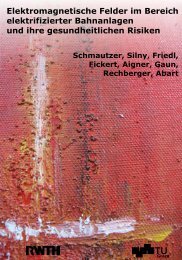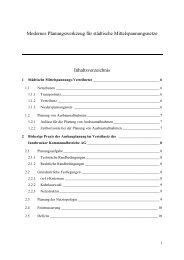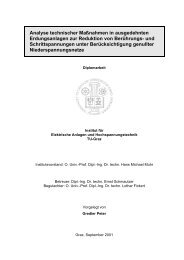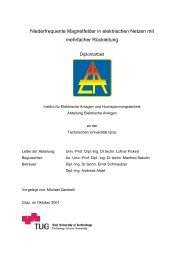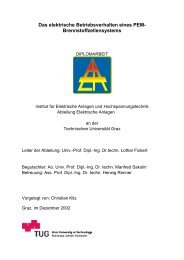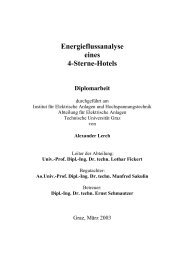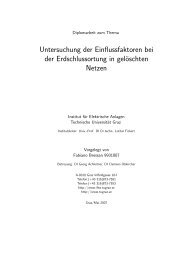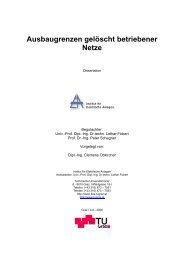Development of a wavelet-based algorithm to detect and determine ...
Development of a wavelet-based algorithm to detect and determine ...
Development of a wavelet-based algorithm to detect and determine ...
Create successful ePaper yourself
Turn your PDF publications into a flip-book with our unique Google optimized e-Paper software.
4.4. DIFFERENCES BETWEEN THE 1991’S AND THE 1999’S STANDARD 26<br />
4.3.3 Data file (xxx...xxx.DAT)<br />
The data file contains the value <strong>of</strong> each sample <strong>of</strong> each input channel. The number<br />
s<strong>to</strong>red for a sample is usually the number produced by the device that samples the<br />
input waveform.<br />
The s<strong>to</strong>red data may be either zero <strong>based</strong>, or it may have a zero <strong>of</strong>fset. Zero-<strong>based</strong> data<br />
goes from a negative number <strong>to</strong> a positive number, e.g., -2000 <strong>to</strong> +2000. Zero-<strong>of</strong>fset<br />
numbers are all positive with a positive number chosen <strong>to</strong> represent zero, e.g., 0 <strong>to</strong><br />
4000 with 2000 representing zero. Conversion fac<strong>to</strong>rs specified in the configuration file<br />
define how <strong>to</strong> convert the data values <strong>to</strong> engineering units.<br />
In addition <strong>to</strong> data representing analog inputs, inputs that represent on/<strong>of</strong>f signals are<br />
also frequently recorded. These are <strong>of</strong>ten referred <strong>to</strong> as digital inputs, digital channels,<br />
digital subchannels, event inputs, logic inputs, binary inputs, contact inputs or status<br />
inputs. In this st<strong>and</strong>ard, this type <strong>of</strong> input is referred <strong>to</strong> as a status input. The state <strong>of</strong><br />
a status input is represented by a number "1" or "0" in the data file.<br />
4.4 Differences between the 1991’s <strong>and</strong> the 1999’s stan-<br />
dard<br />
In 1999 was a revision <strong>of</strong> this COMTRADE St<strong>and</strong>ard. Their are a few differences be-<br />
tween the 1991’s <strong>and</strong> the 1999’s st<strong>and</strong>ard, which are listed below.<br />
1. The Header (.HDR) file is explicitly defined as optional.<br />
2. The Configuration (.CFG) file has been modified. A field containing the COM-<br />
TRADE st<strong>and</strong>ard revision year has been added <strong>to</strong> distinguish files made under<br />
this or future revisions <strong>of</strong> the st<strong>and</strong>ard. If this field is not present, the data is<br />
assumed <strong>to</strong> comply with the COMTRADE st<strong>and</strong>ard C37.111-1991 [3]. A field<br />
for a Time Stamp Multiplication Fac<strong>to</strong>r has been added <strong>to</strong> meet the need for<br />
long duration files. To assist in conversion <strong>of</strong> the data, three new scaling fields<br />
(primary, secondary, <strong>and</strong> primary-secondary) are added, defining the instrument



